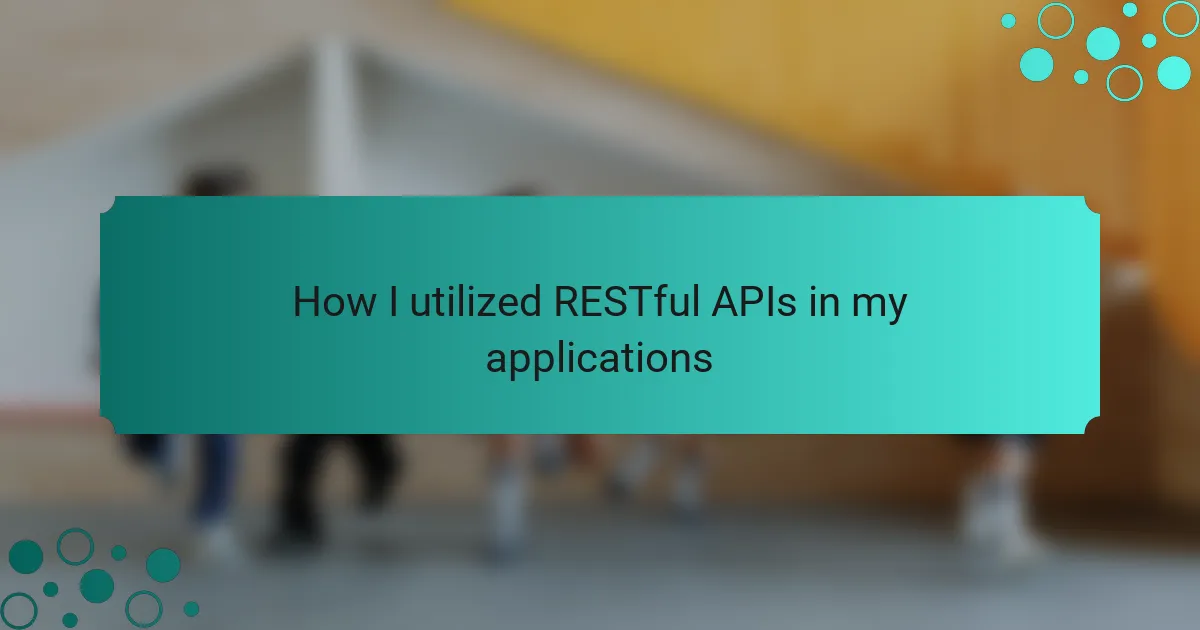Key takeaways
- RESTful APIs simplify application development by using standard HTTP methods, enhancing communication between systems.
- Key benefits include scalability, loose coupling, and the ability to quickly integrate existing services without rewriting code.
- Understanding components like resources, HTTP methods, and statelessness is crucial for building efficient applications.
- Adopting best practices such as clear endpoint naming, using appropriate HTTP status codes, and API versioning can significantly improve usability and collaboration.
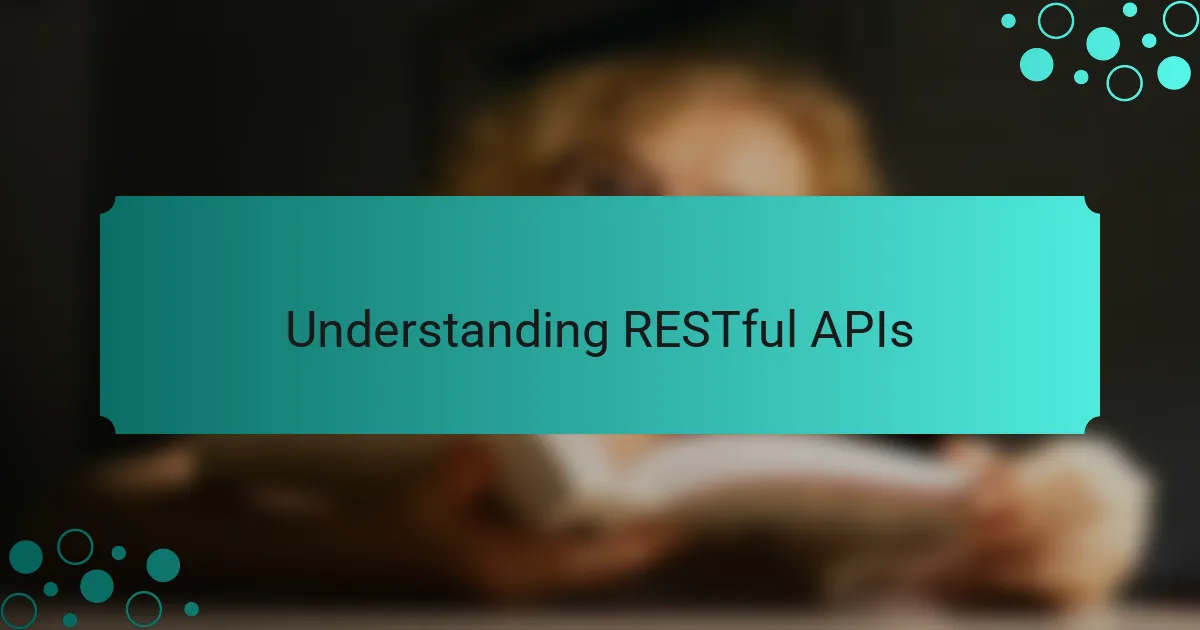
Understanding RESTful APIs
RESTful APIs, or Representational State Transfer APIs, are like the bridges that connect different software applications, allowing them to communicate seamlessly. I remember the first time I integrated a RESTful API into one of my projects; it felt like discovering a key to unlock a world of possibilities. Instead of crafting every feature from scratch, I could simply tap into existing services, which made my development process so much faster and, quite frankly, a lot more enjoyable.
What’s fascinating about RESTful APIs is their reliance on standard HTTP methods such as GET, POST, PUT, and DELETE. These methods represent how we interact with resources; for instance, if you’re fetching data, you typically use GET. I often found myself questioning how much I could simplify my codebase by using these standard methods, and the answer was always a resounding “a lot!”
Another crucial aspect is statelessness, meaning each request from a client contains all the information the server needs to fulfill it. I learned this firsthand when debugging an issue in my application, which would’ve been a nightmare if the server had to remember past interactions. Instead, I could focus more on crafting a better user experience without worrying about session management. Isn’t it liberating to know that flexibility and cleaner code are just a few RESTful principles away?
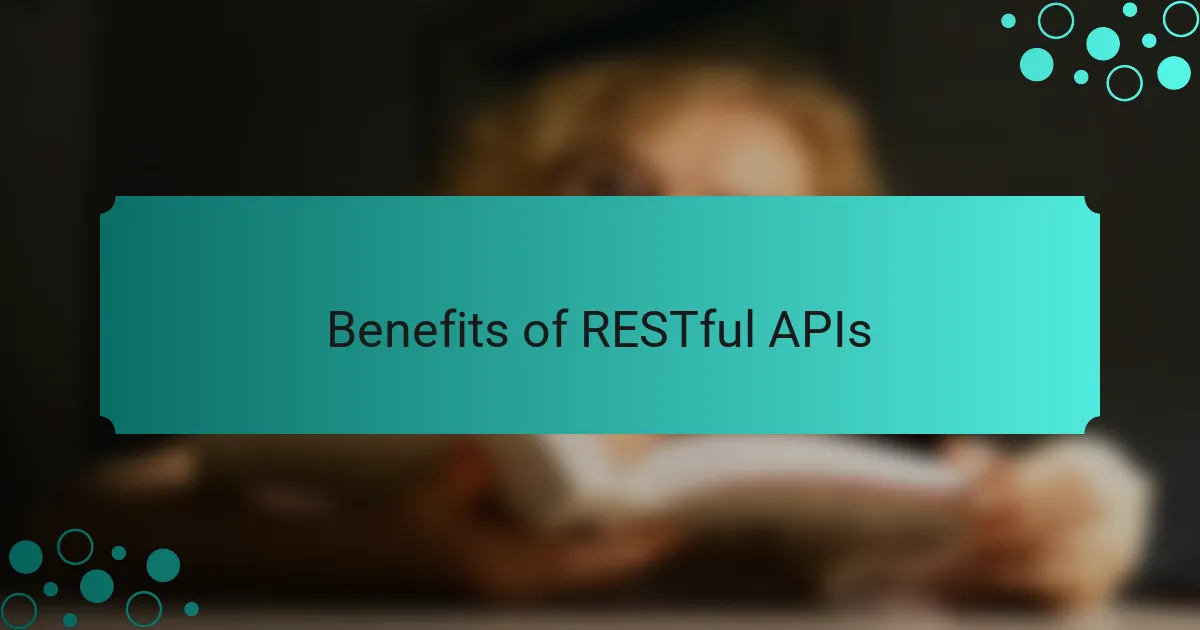
Benefits of RESTful APIs
When I started incorporating RESTful APIs into my applications, I quickly realized the transformative power they had on my development process. The ability to use standard HTTP methods makes communication between systems not only simpler but also more intuitive. I remember the first time I successfully built an app that retrieved data from an external source—seeing the real-time updates was truly exhilarating!
Another significant advantage of RESTful APIs is their scalability. As my applications grew in complexity, the structured approach of REST allowed me to expand features without overhauling my entire codebase. It felt like adding rooms to a house rather than building a new one from scratch—much less stressful and far more efficient!
Lastly, RESTful APIs promote loose coupling. This means that front-end and back-end components can evolve independently, which I found critical in my iterative development cycles. It reminded me of a well-oiled machine: each part operates smoothly without needing constant intervention from the others.
| Benefit | Description |
|---|---|
| Simplicity | Uses standardized HTTP methods for easier communication |
| Scalability | Allows for seamless expansion of applications |
| Loose Coupling | Enables independent evolution of components |
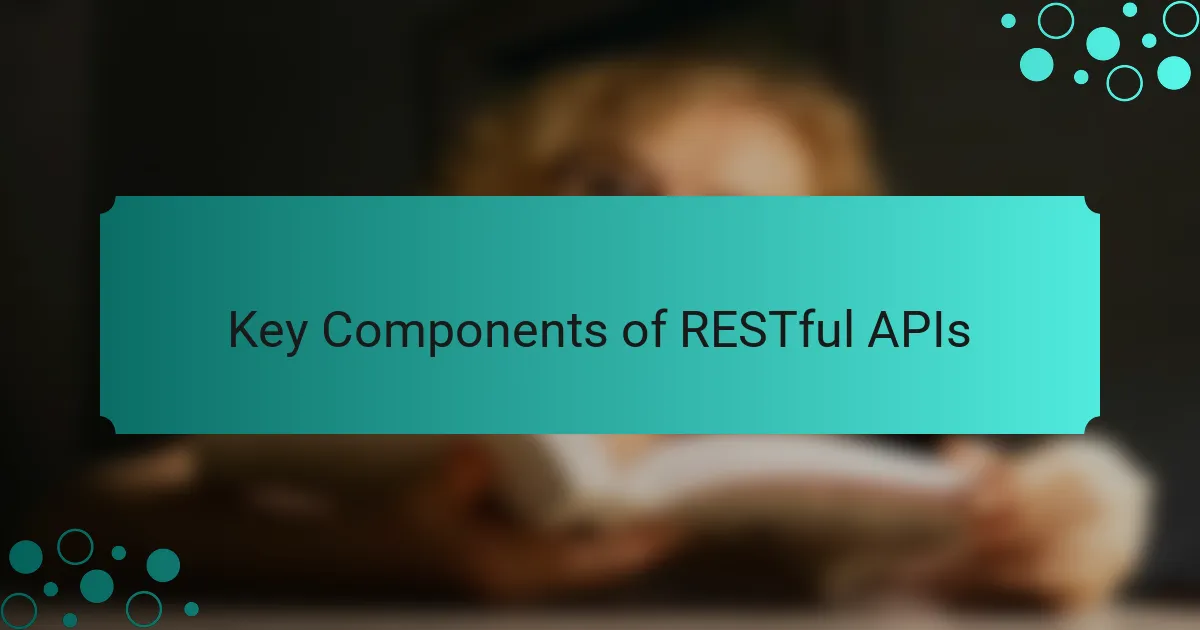
Key Components of RESTful APIs
When I began diving into RESTful APIs, I quickly realized that understanding the key components was crucial for building efficient applications. Each component plays a vital role in how data is structured and interacted with, so knowing them can make a huge difference in my development process. For instance, the statelessness of REST ensures that each request from the client to the server contains all the information needed to fulfill that request, simplifying error handling and improving performance.
One of the most eye-opening aspects for me was learning about resources and their representations. I still remember the moment I grasped that resources are anything I want to expose to the client—like users, posts, or products—and that I could manipulate these resources using standard HTTP methods. It felt empowering to know that I could create RESTful APIs that adhered to these principles just by following some simple guidelines.
Here’s a quick comparison of the key components:
| Component | Description |
|---|---|
| Resource | Objects or data exposed by the API, identified by URIs. |
| HTTP Methods | Standard methods used to operate on resources (GET, POST, PUT, DELETE). |
| Statelessness | Each request from a client must contain all the information (no session state). |
| Representations | Data formats (like JSON or XML) used to represent resources. |

How to Integrate RESTful APIs
When I first started integrating RESTful APIs into my applications, I encountered several challenges. I found it crucial to understand the fundamental HTTP methods—GET, POST, PUT, and DELETE—as they form the backbone of RESTful communication. For instance, when building a weather app, utilizing the GET method to fetch data from an external API really opened my eyes to the power of real-time information.
In my experience, tools like Postman were invaluable during the testing phase. I remember animatedly exploring different endpoints and seeing live responses that helped me troubleshoot issues. This experimentation not only honed my debugging skills but also deepened my appreciation for how APIs could enhance user experience by providing dynamic content.
Here’s a comparison table summarizing key RESTful methods and their functionalities:
| HTTP Method | Description |
|---|---|
| GET | Retrieve data from a specified resource. |
| POST | Submit data to be processed to a specified resource. |
| PUT | Update a specified resource with new data. |
| DELETE | Remove a specified resource. |
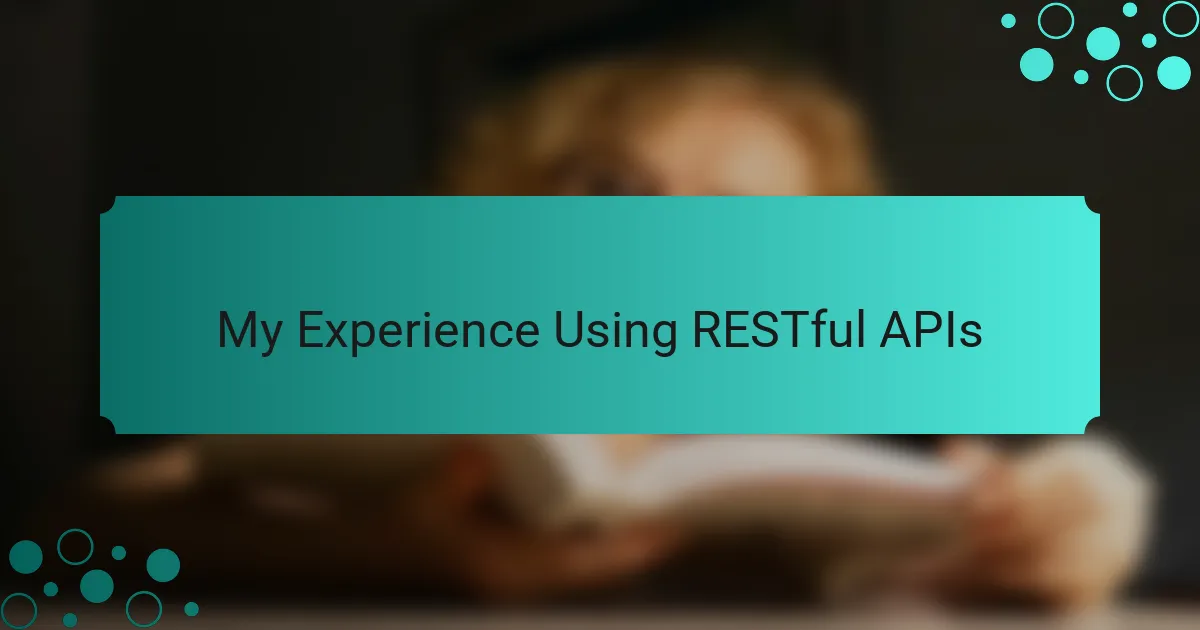
My Experience Using RESTful APIs
My experience with RESTful APIs has been transformative in my app development journey. When I first dove into using APIs, I was amazed by how they could simplify complex processes. Connecting to third-party services, like weather data and authentication, became almost seamless. I remember the thrill of seeing my application pull live data with just a few lines of code. It felt like I had superpowers at my fingertips!
One of the most fulfilling moments was when I integrated a payment gateway API into my app. Initially, I was intimidated by the documentation, but as I took it one step at a time, I realized how intuitive it was. After successfully making my first transaction, I felt a wave of satisfaction knowing that I had created something functional and user-friendly.
Here’s a comparison of RESTful APIs with other types of APIs I’ve encountered:
| Feature | RESTful API | SOAP API |
|---|---|---|
| Data Format | JSON or XML | XML |
| Communication Style | Stateless | |
| Ease of Use | High | Moderate |
| Performance | Faster | Slower |
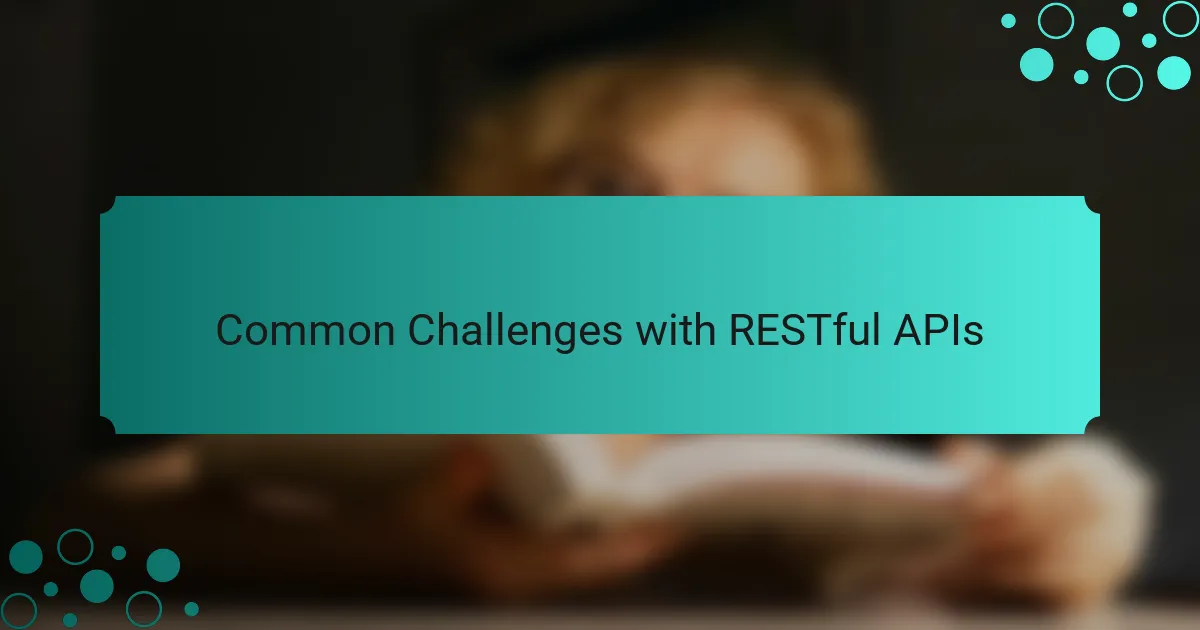
Common Challenges with RESTful APIs
When working with RESTful APIs, I’ve faced a few common challenges that can be quite frustrating. One significant challenge is handling inconsistent data formats. Sometimes, the API returns data in a structure not easily usable, leading to additional transformation work on my side. Another recurring issue is dealing with rate limits; certain APIs restrict the number of requests you can make in a given timeframe, which can hinder the user experience if not managed properly.
Additionally, authentication can become a headache. I remember a project where I spent hours troubleshooting token expiry issues, only to realize that I had overlooked the need for refreshing the tokens periodically. These hurdles are all part of the learning process, but they do require patience and a strategic approach to overcome.
| Challenge | Description |
|---|---|
| Inconsistent Data Formats | API responses may vary, requiring additional data transformation. |
| Rate Limits | APIs often restrict the number of requests, complicating data retrieval. |
| Authentication Issues | Managing token expiry and refresh requirements can be complex. |
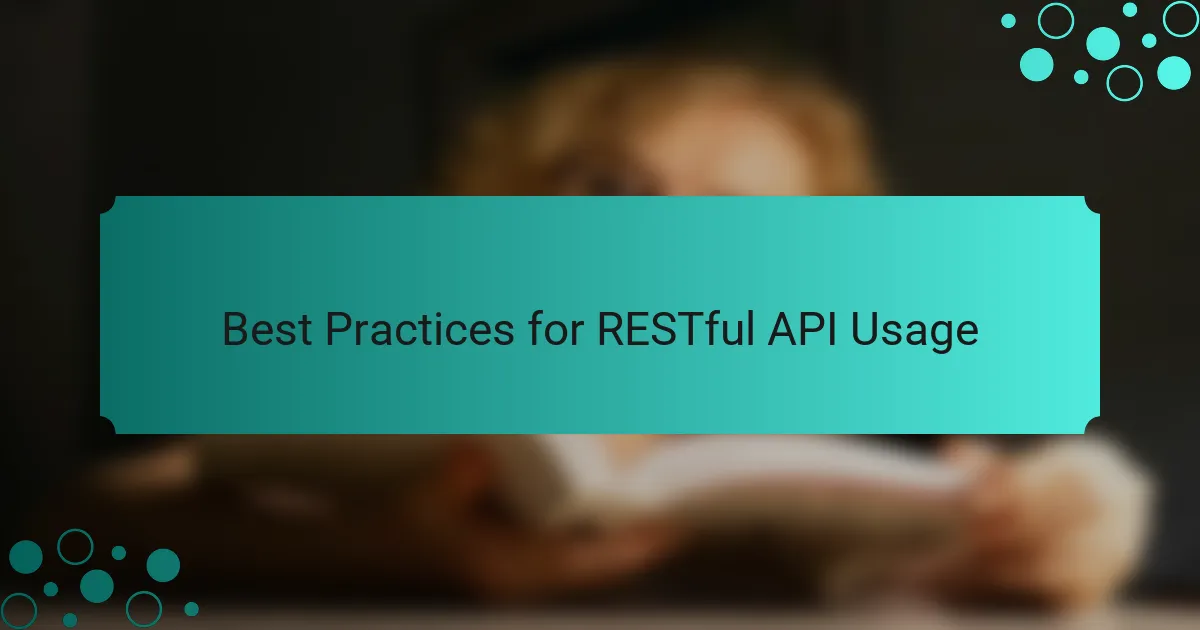
Best Practices for RESTful API Usage
When it comes to utilizing RESTful APIs, following best practices can significantly elevate your development experience. One of the first lessons I learned was the importance of designing clear and consistent endpoints. For example, I remember a time when I named my API endpoints with vague terms, and it created confusion for anyone using them. By opting for descriptive names—like /users instead of just /u—I not only made my API more intuitive but also easier for my team to collaborate on. Isn’t it amazing how clarity can streamline communication?
Another key practice I adopted is using the appropriate HTTP status codes. Initially, I would send back generic messages, which added to the ambiguity. However, once I started using codes like 200 for success, 404 for not found, and 500 for server errors, my error handling improved dramatically. It not only gave me more precise debugging information but also enhanced the user experience, as clients could understand what went wrong. Have you ever considered how a simple status code can foster better conversations between client and server?
Lastly, I learned the value of versioning my API. There’s nothing worse than making breaking changes and impacting existing users. Early in my career, I made this misstep, and it taught me a hard lesson. By implementing versioning—like /v1/users—I maintained backward compatibility while allowing for new features. This approach proved crucial for my projects as they evolved. It’s a reassuring way to balance innovation with user loyalty.
